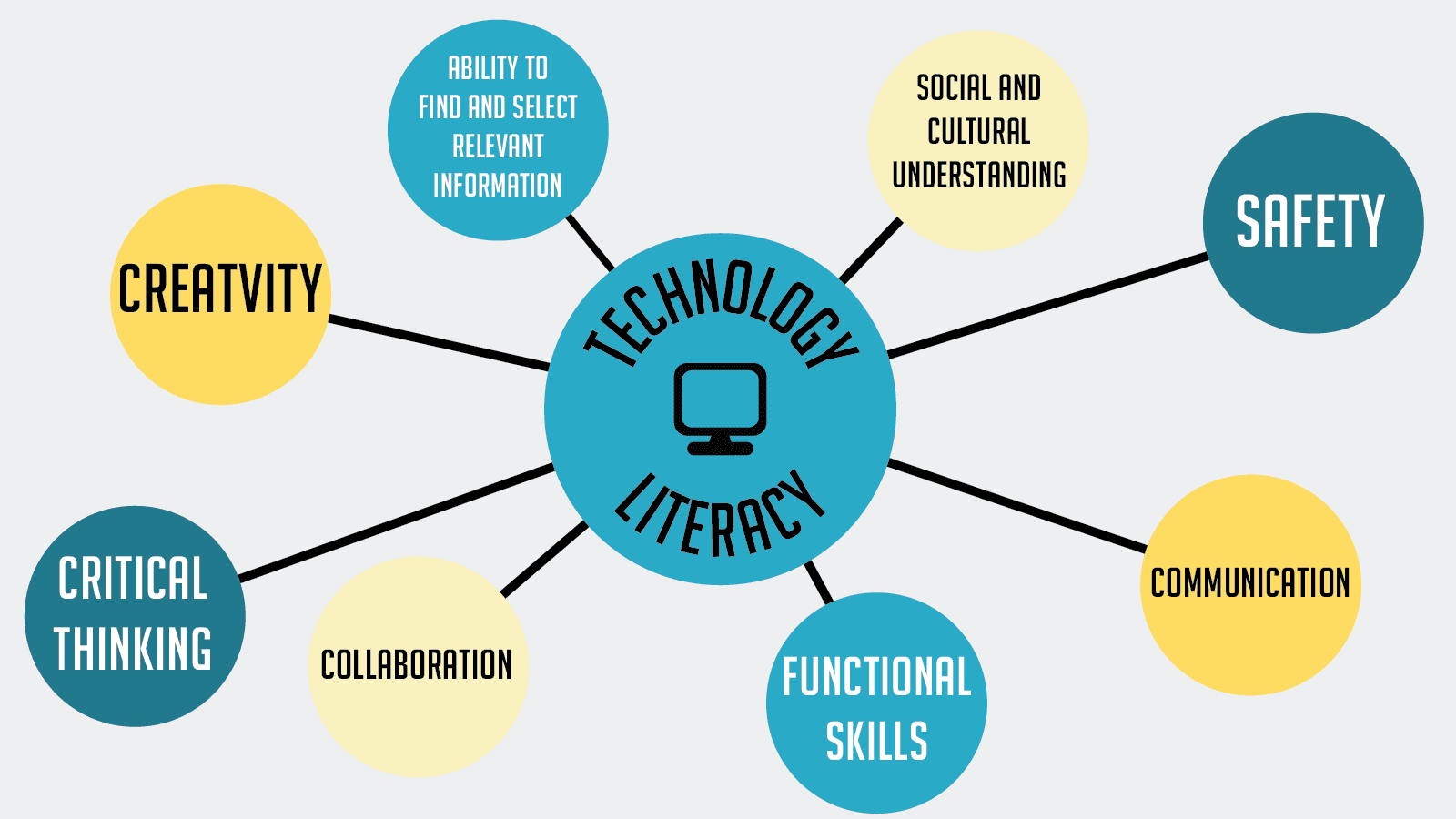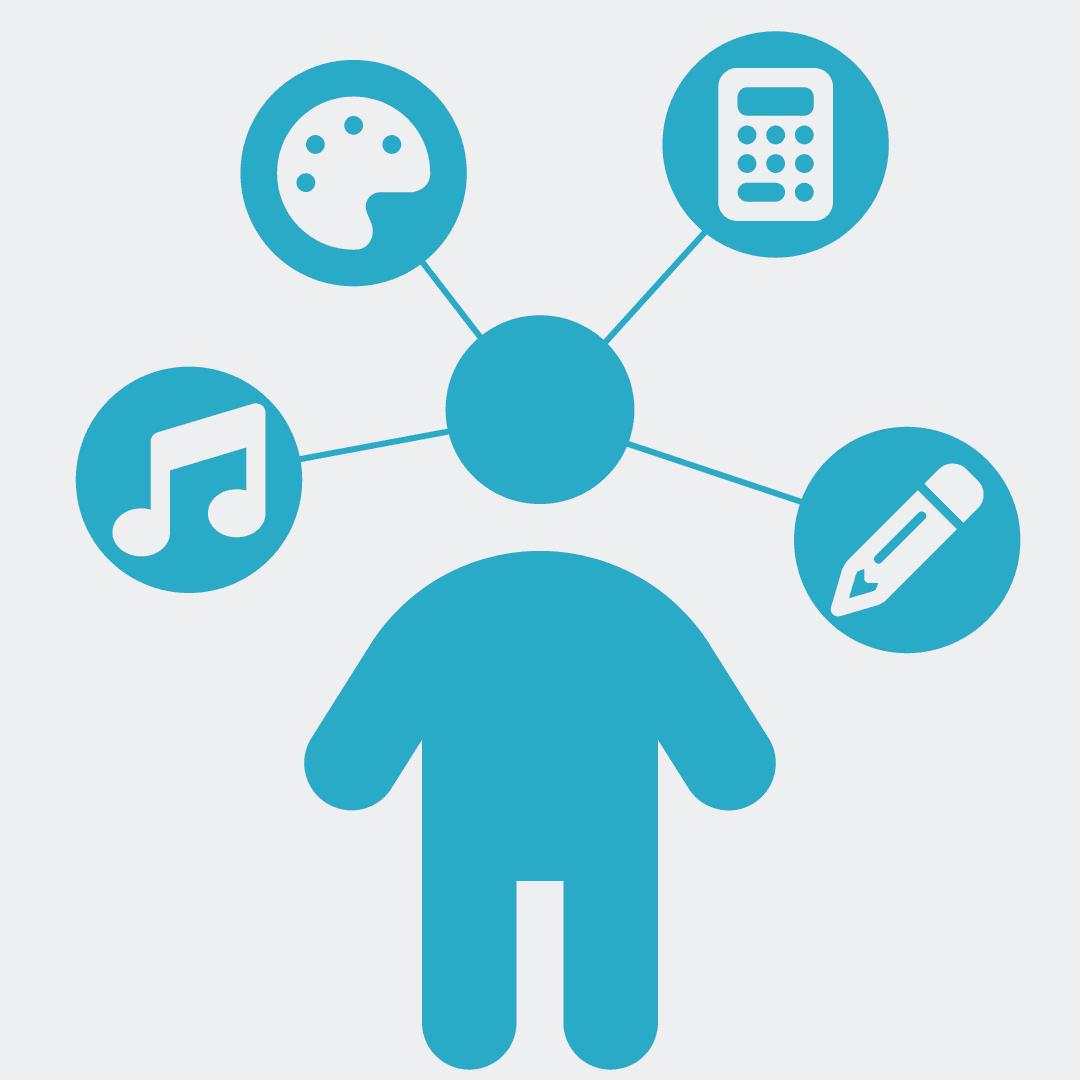We are living in a world where technology is everywhere. While there are countless benefits to technological advances, it’s crucial to be able to use this technology safely and effectively.
To help build your understanding of technology literacy, this article will answer two key questions: what is it, and why is it important? By providing some technology literacy examples, you’ll be ready to prepare students to succeed in a technology-rich world.
What is Technology Literacy?
Technology literacy is simply the ability to use technology safely, effectively, and responsibly. Along with media literacy, it falls under the broader term of “digital literacy.” While media literacy is similar in that it is the ability to understand information presented to us across the internet, newspapers, books, and television, “media literacy” is more commonly used to refer to the ability to analyze information and decide what is trustworthy and what is false or misleading.
Technology literacy extends to using technology for evaluation, creation, and integration of information. While it encompasses computers, smartphones, and tablets, it’s not limited to these devices; it can be applied to any technological tool. This article focuses on technology literacy in reference to digital technologies.
Why is Technology Literacy Important?:
What was once a luxury has become a common and readily accessible tool in every aspect of our lives, including education. Students worldwide now learn on interactive whiteboards, virtual reality technology provides unique learning experiences, and social robots support learners with additional needs in classrooms.
As technology’s role in our lives expands, it’s crucial to navigate it in a way that enhances rather than hinders us. Unfortunately, this is easier said than done. Despite numerous benefits, technology use comes with drawbacks. Therefore, technological literacy guides us on how to maximize our technology’s potential while avoiding pitfalls.

The Essential Elements of Technology Literacy:
Now, let’s delve into the comprehensive essential elements of technology literacy for 21st-century students:
- Communication: Students must learn internet safety fundamentals, such as creating strong passwords and understanding privacy settings. Tech-literate individuals can communicate safely and securely online, not just by consuming information but also by creating and sharing their content.
- Collaboration: In a digitally connected world, collaboration is key. Students should develop the ability to work effectively with others using technology, whether it’s through shared documents, online project management tools, or virtual collaboration platforms. Collaborative skills ensure they can thrive in team environments.

- Critical Thinking: Just as traditional reading and writing literacy are vital, comprehending digital content is equally important. Critical-thinking students can evaluate information, ensuring they access high-quality digital content by analyzing information for accuracy, validity, reliability, and authority.

- Creativity: Technology literacy should foster creativity. Students should be encouraged to use technology as a means to express their ideas, develop innovative solutions, and create digital content.
- Functional Skills: Beyond creativity, students should have functional skills to operate a variety of digital tools and platforms efficiently. This includes understanding software interfaces, troubleshooting common issues, and adapting to new digital environments.
- Ability to Find and Select Relevant Information: The internet is a vast information landscape. Being tech literate means having the skills to navigate this landscape effectively, finding credible sources, and discerning relevant information from the noise. This ability is crucial for research, decision-making, and staying well-informed.
- Social and Cultural Understanding: Technology connects us across borders and cultures. A tech-literate individual should understand how technology impacts society and culture globally.
- Safety: Safety in the digital realm is paramount. Students need to be well-versed in online safety practices, including identifying and avoiding online threats, cyberbullying, and recognizing potentially harmful content. Promoting a safe online experience is essential.

With these comprehensive technology literacy skills, students and educators can adapt to technological changes with ease and thrive in our interconnected, digital world.
Need assistance in teaching these essential elements of technology literacy? Consider Marty the Robot, the walking, dancing, eyebrow-wiggling humanoid robot, which can introduce valuable problem-solving and critical thinking skills. Sign up for your free 2-week trial today!







Other posts you may like
Title IV-A Funds: A Lifeline for STEM Education
As the deadline to use ESSER funding draws closer, it’s important that school districts explore other funding sources to sustain and improve services. For school districts looking to foster a...
Celebrating Marty’s Impact on STEM Education
As the school year comes to an end, we at Robotical are thrilled to reflect on the remarkable impact Marty the Robot has had on STEM education in recent years....
The Magic of Student Led Learning
Student led learning isn't just a buzzword; it's a game-changing technique that lets students steer their own learning journey. But what's the real magic behind student led learning? Let's dive...
TRY MARTY
FOR FREE
Are you looking for new STEM resources for your classroom? Robotical are loaning Marty the Robot to schools for no-obligation, 2 week trials.